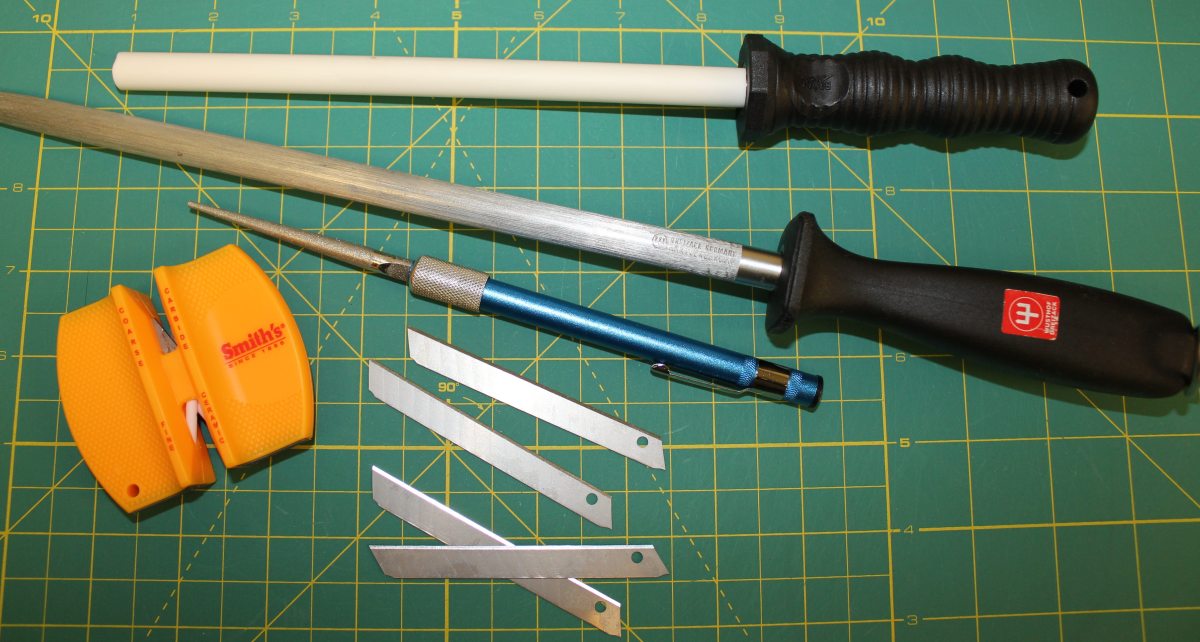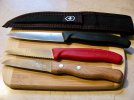joeradza
Gold Member
- Joined
- Feb 6, 2014
- Messages
- 10,774
The BladeForums.com 2024 Traditional Knife is ready to order! See this thread for details:
https://www.bladeforums.com/threads/bladeforums-2024-traditional-knife.2003187/
Price is $300 $250 ea (shipped within CONUS). If you live outside the US, I will contact you after your order for extra shipping charges.
Order here: https://www.bladeforums.com/help/2024-traditional/ - Order as many as you like, we have plenty.
I love it's utilitarian looks, history, and function. It has great walk and talk with a very strong pull (which I like) that is easily pinchable to open and is easy to pocket carry. But it has an unfair advantage as it was a gift from my daughter.How has the Douk Douk worked for you? Like it?

Always love to see a douk douk! Absolutely sweet knives
Decent edge holding? I know it may be softer but easy to put the edge back on.I love it's utilitarian looks, history, and function. It has great walk and talk with a very strong pull (which I like) that is easily pinchable to open and is easy to pocket carry. But it has an unfair advantage as it was a gift from my daughter.

Decent edge holding? I know it may be softer but easy to put the edge back on.

This is probably the wrong thread for this discussion, but I noticed the guys who work at the slaughterhouse (where I go to slaughter a sheep or goat a couple of times a year) also have basic industrial stainless steel knives which they keep sharp by frequent steeling. I worked on a fishing boat one summer as a teenager and seem to recall the skipper taking my knife to sharpen it a couple of times a day. I imagine other professional or industrial situations are similar.Decent for me but I may be the wrong person to ask. I know it is relatively soft but so were my knives when I was a cook at a steak house and also did food prep all day. I constantly used honing steels and could tell when raw meat or tomatoes were not easy to slice, a few swipes and good to go.
I still use honing steel on my fixed and folders. (Just took a minute on my Douk Douk and it's sharp again lol)

What Does Steeling Do? Part 1
It is a common misconception that steeling does not remove metal, but simply “re-aligns the edge.”scienceofsharp.com
I worked in a kitchen through high school, went to culinary school and continued in a kitchen for a few years after that until discovering that career path wasn't a good fit for me.in a professional setting it seems easy of resharpening is more important.

Any time you're talking about knives in a commercial setting, there's a lot more factors that go into blade selection beyond many of the attributes prized by individuals - namely cost, cost, and cost, and then availability (things happen and replacements will be needed), consistency (don't want the workers to have to re-learn their skills because it would slow down production), longevity and ease (and cost) of maintenance - did I mention cost?This is probably the wrong thread for this discussion, but I noticed the guys who work at the slaughterhouse (where I go to slaughter a sheep or goat a couple of times a year) also have basic industrial stainless steel knives which they keep sharp by frequent steeling. I worked on a fishing boat one summer as a teenager and seem to recall the skipper taking my knife to sharpen it a couple of times a day. I imagine other professional or industrial situations are similar.
A lot of enthusiasts are hung up on edge retention, but in a professional setting it seems ease of resharpening is more important.
I almost never take my knives to the stones except to set the original bevel. After that it’s just a few swipes on a fine ceramic rod periodically to keep it sharp.
.jpg)

Love that little spear main whittler, Mike!Rough Ryder whittler. I used it to open a package a little while ago and it sure is a slicey little thing. I didn't take any action pics of the package opening. Maybe I'll do a reenactment later on
View attachment 2337205


